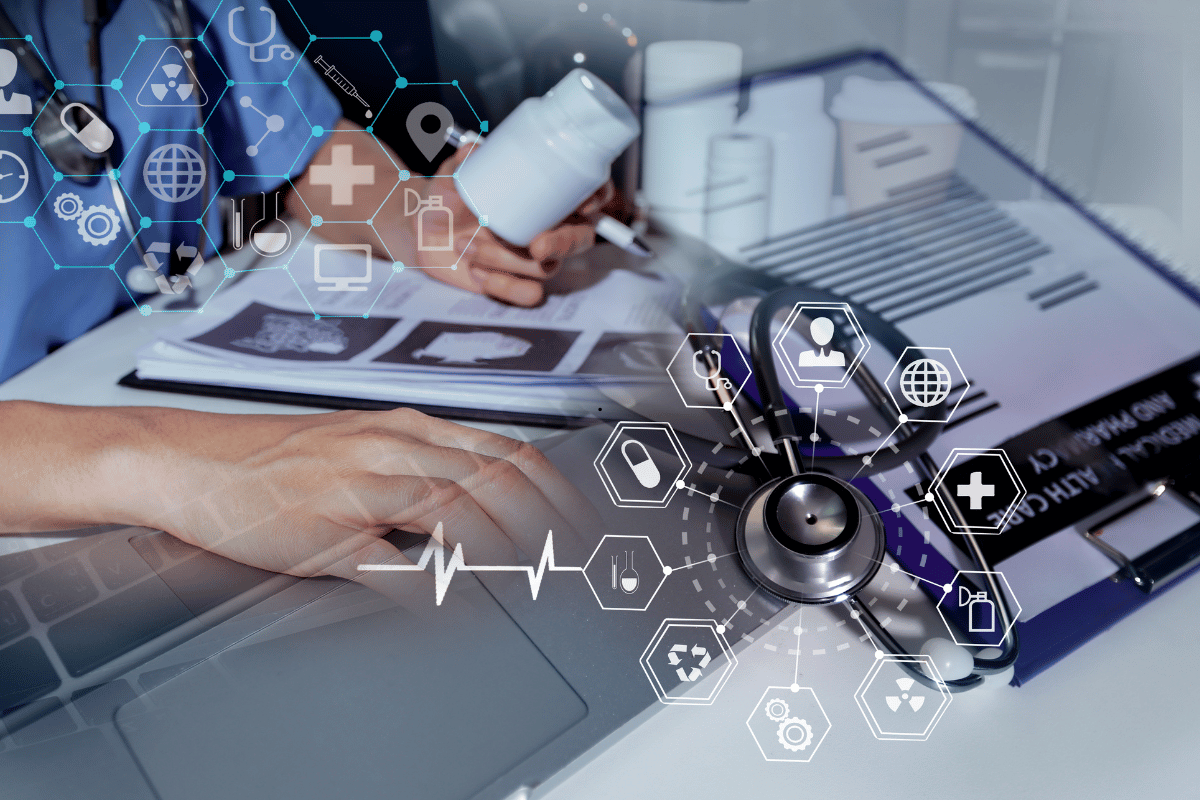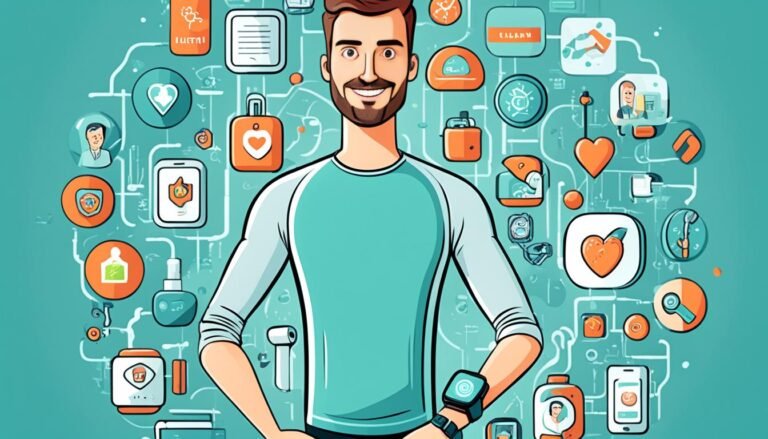Case Study: The Interplay Between Healthcare IT and Patient Satisfaction
In the ever-evolving landscape of healthcare, the interplay between healthcare IT and patient satisfaction has emerged as a critical area of study. This case study delves into the intricate relationship between technology and patient experience, exploring the impact of electronic health records, telemedicine, mobile health apps, and wearable devices.
With a focus on streamlining administrative processes and harnessing data analytics, this investigation aims to shed light on the potential of healthcare IT in enhancing patient satisfaction while ensuring privacy and security.
Key Takeaways
- Healthcare IT plays a crucial role in improving patient satisfaction by enhancing communication and coordination among healthcare providers.
- Data analytics is a valuable tool for identifying patterns and trends in patient feedback and experiences, as well as personalizing care planning based on individual patient needs.
- Ensuring privacy and security in healthcare IT systems is essential to maintain patient trust and protect sensitive data.
- Healthcare organizations need to prioritize patient satisfaction in their IT strategies, recognizing the impact of healthcare IT on improving patient experience.
The Growing Role of Healthcare IT in Patient Satisfaction
The integration of healthcare IT systems has significantly enhanced the efficiency and effectiveness of patient care, leading to an improved overall patient satisfaction. Technology advancements in healthcare IT have revolutionized the way healthcare providers deliver care, enabling them to streamline processes, reduce errors, and improve patient outcomes. Patient feedback plays a crucial role in understanding the impact of healthcare IT on patient satisfaction.
One of the key technology advancements in healthcare IT is the adoption of electronic health records (EHRs). EHRs allow healthcare providers to access and share patient information seamlessly, eliminating the need for paper-based records and reducing the risk of errors. This not only improves the accuracy and timeliness of patient care but also enhances communication and collaboration among healthcare professionals.
In addition to EHRs, specialized healthcare software tailored for hospice care has further streamlined operations in end-of-life care settings. Software for hospice not only enhances the efficiency of daily tasks but also significantly improves patient care by facilitating better communication and tracking. Staying updated on legislative or regulatory changes is essential to ensure compliance and adapt to evolving standards, further showcasing how hospice software can streamline operations and improve patient care.
Software solutions are also making strides in areas such as vaccine distribution and administration. With reliable vaccine management software solutions, healthcare providers can easily track inventory levels, distribution, and administration of vaccines, reducing the likelihood of errors and improving overall patient satisfaction. Plus, data analytics tools can help identify patterns and trends in vaccine uptake and patient outcomes, aiding in future planning and decision-making.
Furthermore, healthcare IT systems have facilitated the implementation of telehealth services, enabling patients to receive care remotely. This has been particularly beneficial for patients in underserved areas or those with limited mobility, as it eliminates the need for unnecessary travel and reduces healthcare costs.
Patient feedback has highlighted the positive impact of healthcare IT on their overall experience. Patients appreciate the convenience and accessibility of online appointment scheduling, electronic prescription refills, and virtual consultations. They also value the ability to access their own health information through patient portals, which empowers them to take an active role in their healthcare.
Implementing Electronic Health Records: Impact on Patient Satisfaction
As healthcare organizations implement electronic health records, there is a significant impact on patient satisfaction. The implementation of electronic health records brings about both benefits and challenges.
Here are some key points to consider regarding the impact of electronic health record implementation on patient satisfaction:
- Increased accessibility: Electronic health records allow healthcare providers to access patient information quickly and easily, leading to more efficient care and improved patient satisfaction.
- Enhanced communication: Electronic health records facilitate seamless communication among healthcare providers, resulting in better coordination of care and improved patient satisfaction.
- Reduced errors: Electronic health records help eliminate medical errors caused by illegible handwriting or misplaced paper files, leading to safer care and increased patient satisfaction.
- Privacy concerns: The implementation of electronic health records raises concerns about patient privacy and data security, which can affect patient satisfaction if not properly addressed.
- Implementation challenges: The process of implementing electronic health records can be complex and time-consuming, potentially causing disruptions in healthcare delivery and impacting patient satisfaction.
Furthermore, while the cost effectiveness of electronic health record implementation is a key consideration, it is essential to balance the financial aspects with the potential benefits in terms of improved patient satisfaction and overall healthcare outcomes.
Leveraging Telemedicine for Improved Patient Satisfaction
Hospitals can leverage telemedicine to improve patient satisfaction and provide more efficient healthcare services. Telemedicine refers to the use of telecommunications technology to provide remote clinical services to patients.
By implementing telemedicine programs, hospitals can enhance patient satisfaction by offering convenient and accessible healthcare services. Patients can consult with healthcare providers remotely, eliminating the need for in-person visits and reducing wait times. This convenience is particularly beneficial for patients in rural areas who may have limited access to healthcare facilities.
However, for hospitals to fully leverage telemedicine, it is crucial to address two key factors: telemedicine reimbursement and telemedicine regulations. Reimbursement is an important consideration as hospitals need to ensure that they are appropriately compensated for providing telemedicine services. Many insurance providers now offer reimbursement for telemedicine consultations, but it is essential for hospitals to navigate the complex reimbursement landscape to ensure financial sustainability.
Additionally, hospitals must comply with telemedicine regulations to ensure the legality and quality of their services. These regulations vary by jurisdiction and may encompass licensure requirements, privacy and security standards, and guidelines for prescribing medication remotely. Hospitals must stay updated with evolving regulations to ensure compliance and maintain patient trust.
Enhancing Communication and Coordination Through Healthcare IT
One key aspect of enhancing healthcare services is through the implementation of healthcare IT, which can improve communication and coordination among healthcare providers. By leveraging technology, healthcare organizations can streamline workflows, reduce errors, and ultimately enhance the overall patient experience.
Here are five ways healthcare IT can improve care coordination and enhance patient-provider communication:
- Electronic Health Records (EHRs): EHRs allow for easy access to patient information, enabling healthcare providers to collaborate and share information in real-time. This leads to better coordination of care and reduces the likelihood of medical errors.
- Secure Messaging: Healthcare IT enables secure messaging platforms that allow patients and providers to communicate directly. This enhances patient-provider communication, enabling patients to ask questions, seek clarifications, and receive timely responses.
- Telehealth: Through telehealth technologies, healthcare providers can remotely communicate with patients, eliminating the need for in-person visits. This improves access to care, particularly for patients in remote areas or with limited mobility.
- Appointment Scheduling and Reminders: Healthcare IT systems can automate appointment scheduling and send reminders to patients, reducing no-show rates and improving scheduling efficiency.
- Care Coordination Tools: Healthcare IT platforms often include care coordination tools that facilitate collaboration among different healthcare providers involved in a patient’s care. This ensures that all providers are on the same page and can make informed decisions.
The Impact of Mobile Health Apps on Patient Satisfaction
Mobile health apps have revolutionized the healthcare industry and significantly impacted patient satisfaction. These apps have transformed the way patients manage their health and interact with healthcare providers, leading to improved patient experiences and outcomes. One of the key advantages of mobile health apps is remote patient monitoring, which allows healthcare providers to remotely monitor patients’ vital signs, symptoms, and adherence to treatment plans. This real-time monitoring enables early detection of any issues or deterioration in patients’ health, allowing for timely interventions and proactive care.
Furthermore, mobile health apps offer personalized healthcare interventions, tailoring treatment plans and recommendations to individual patients’ needs and preferences. These apps provide patients with access to a wealth of information and resources, empowering them to actively participate in their own healthcare management. Patients can track their progress, set goals, receive reminders, and access educational materials through these apps, promoting self-management and engagement in their care.
The convenience and accessibility of mobile health apps also contribute to patient satisfaction. Patients can easily schedule appointments, request prescription refills, and communicate with healthcare providers through secure messaging platforms. This streamlines the healthcare process, reduces waiting times, and enhances the overall patient experience.
Using Artificial Intelligence in Healthcare for Enhanced Patient Satisfaction
Artificial intelligence, in conjunction with healthcare technology, has the potential to significantly enhance patient satisfaction in the healthcare sector.
By utilizing AI chatbots for patient support, healthcare providers can offer personalized and timely assistance to patients, improving their overall experience. These chatbots can provide answers to common questions, offer medication reminders, and even act as virtual companions, providing emotional support to patients in need.
Additionally, virtual reality technology can be used to manage pain and reduce anxiety during medical procedures. By immersing patients in a virtual environment, healthcare providers can help distract them from the pain and discomfort, resulting in a more positive experience. Virtual reality can also be used for therapeutic purposes, allowing patients to engage in immersive activities that promote relaxation and stress reduction.
Benefits of using AI in healthcare for enhanced patient satisfaction:
- Increased accessibility to healthcare information and support
- Personalized care and assistance
- Improved communication and responsiveness
- Reduced waiting times and faster access to medical advice
- Enhanced pain management and emotional well-being
The Role of Wearable Devices in Patient Satisfaction
Wearable devices have emerged as a valuable tool in improving patient engagement and satisfaction.
By providing real-time data and feedback, these devices enable patients to actively participate in their own healthcare journey.
Additionally, wearables have shown promising results in enhancing treatment adherence and remote monitoring, allowing healthcare providers to track patient progress and intervene when necessary.
Wearables Improving Patient Engagement
Utilizing wearable devices enhances patient engagement, leading to improved satisfaction in healthcare settings. Wearables have the potential to revolutionize the way patients interact with their healthcare providers and manage their own health.
Here are five key ways in which wearable devices can drive patient engagement:
- Real-time monitoring: Wearables allow patients to track their health data in real-time, providing them with valuable insights into their own well-being.
- Personalized feedback: With wearable devices, patients can receive personalized feedback and recommendations based on their individual health data, empowering them to make informed decisions about their health.
- Remote patient monitoring: Wearables enable healthcare providers to remotely monitor patients’ health conditions, allowing for early detection and intervention when necessary.
- Improved communication: Wearables facilitate communication between patients and healthcare providers, allowing for more efficient and effective healthcare delivery.
- Increased motivation: By providing patients with tangible data on their health progress, wearables can motivate and empower individuals to take an active role in their own healthcare.
Impact on Treatment Adherence
The integration of wearable devices with healthcare IT systems plays a crucial role in improving treatment adherence and ultimately enhancing patient satisfaction. Wearable devices, such as fitness trackers and smartwatches, provide patients with real-time data about their health and treatment progress. This information empowers patients to actively participate in their own care and make informed decisions. By monitoring treatment outcomes and tracking medication adherence, wearable devices can help patients stay on track with their treatment plans. This, in turn, leads to better treatment outcomes and improved patient satisfaction. The following table highlights the impact of wearable devices on treatment adherence:
| Benefits of Wearable Devices for Treatment Adherence |
|---|
| Real-time health monitoring |
| Medication reminders |
| Behavioral change support |
| Personalized treatment plans |
| Enhanced patient engagement |
Enhancing Remote Monitoring
Remote monitoring through the integration of wearable devices has emerged as a valuable tool in improving patient satisfaction. By utilizing remote monitoring techniques and remote patient monitoring devices, healthcare providers can gather real-time data on patients’ health conditions and track their progress outside of traditional clinical settings.
This approach has several benefits that contribute to enhanced patient satisfaction:
- Increased convenience: Patients can monitor their health from the comfort of their own homes, eliminating the need for frequent hospital visits.
- Improved accessibility: Remote monitoring allows patients in rural or remote areas to access healthcare services without the need for long-distance travel.
- Enhanced patient engagement: Wearable devices promote active patient involvement in their own healthcare, leading to better adherence to treatment plans.
- Timely interventions: Remote monitoring enables healthcare providers to identify potential health issues early and intervene promptly, preventing complications.
- Personalized care: Real-time data from wearable devices allows healthcare providers to tailor treatment plans to individual patients’ needs.
Streamlining Administrative Processes WITh Healthcare IT
Streamlining administrative processes with healthcare IT can significantly improve efficiency in healthcare settings.
One key area where digital records can enhance efficiency is by providing easy access to patient information, reducing the time spent searching for paper records.
Additionally, healthcare IT can improve appointment scheduling by automating the process, ensuring better coordination and reducing patient wait times.
Efficiency of Digital Records
Efficiency in digital records optimization enhances the effectiveness of administrative processes within healthcare IT systems. By streamlining administrative processes, healthcare IT can have a significant impact on treatment adherence and patient satisfaction. Here are five ways in which the efficiency of digital records can improve healthcare delivery:
- Real-time access to patient information allows for better coordination and communication among healthcare providers, reducing the risk of errors and improving treatment outcomes.
- Automated reminders and alerts can be set up to ensure timely medication adherence and follow-up appointments, improving patient compliance.
- Electronic prescribing eliminates the need for manual paperwork and streamlines the prescription process, reducing errors and improving efficiency.
- Digital records can be easily shared between healthcare providers, enabling seamless coordination of care and reducing duplication of tests or procedures.
- Analytical tools can be used to identify patterns and trends in patient data, facilitating proactive interventions and personalized treatment plans.
Efficient digital records optimization has the potential to revolutionize healthcare by improving treatment adherence and patient outcomes.
Improving Appointment Scheduling
By utilizing healthcare IT systems, appointment scheduling can be optimized to improve the efficiency and accuracy of administrative processes within healthcare organizations. This not only enhances the patient experience but also optimizes resource utilization. With the help of healthcare IT, healthcare organizations can streamline the appointment scheduling process, reducing the time and effort required to book appointments. This improves patient satisfaction by minimizing wait times and ensuring that appointments are scheduled promptly. Additionally, healthcare IT enables automated reminders and notifications, reducing the number of missed appointments and improving patient adherence to their healthcare plans. Furthermore, healthcare IT systems can provide real-time updates on the availability of healthcare providers, allowing for better coordination and allocation of resources. This ultimately leads to improved patient experience and optimized resource utilization within healthcare organizations.
| Benefits of Healthcare IT in Appointment Scheduling | ||
|---|---|---|
| 1. Improved efficiency and accuracy | 2. Reduced wait times and prompt scheduling | 3. Automated reminders and notifications |
| 4. Minimized missed appointments | 5. Improved patient adherence | 6. Real-time updates on provider availability |
| 7. Better coordination and resource allocation | 8. Enhanced patient experience | 9. Optimized resource utilization |
Reducing Billing Errors
One effective way to reduce billing errors in healthcare organizations is by utilizing healthcare IT systems in conjunction with administrative processes. By implementing healthcare IT systems, organizations can streamline their billing processes and improve accuracy in billing. This can lead to a more efficient revenue cycle, increased financial stability, and improved patient satisfaction.
Some key benefits of using healthcare IT systems to reduce billing errors include:
- Automated data entry and verification, reducing the risk of human error.
- Integration of electronic medical records (EMRs) with billing systems, ensuring accurate and up-to-date patient information.
- Real-time claims processing and validation, minimizing the chances of claim denials.
- Enhanced coding and documentation support, improving billing accuracy.
- Automated generation of patient statements and invoices, reducing the risk of errors in billing.
The Importance of Data Analytics in Improving Patient Satisfaction
The use of data analytics plays a vital role in improving patient satisfaction in healthcare. By analyzing large amounts of data, healthcare providers can gain valuable insights into patient preferences, behaviors, and outcomes. These data-driven insights enable providers to deliver personalized care that meets the unique needs of each patient.
One way data analytics can improve patient satisfaction is by identifying patterns and trends in patient feedback and experiences. For example, by analyzing survey responses and online reviews, healthcare organizations can identify common themes or issues that affect patient satisfaction. This information can then be used to make targeted improvements and address areas of concern.
Data analytics also allows healthcare providers to track patient outcomes and measure the effectiveness of different interventions or treatments. By monitoring patient progress and adjusting care plans accordingly, providers can ensure that patients are receiving the most appropriate and effective care, leading to improved satisfaction and outcomes.
To illustrate the impact of data analytics on patient satisfaction, consider the following table:
| Data Analytics Application | Benefits |
|---|---|
| Patient feedback analysis | Identifies areas for improvement and enhances patient experience |
| Outcome tracking | Ensures effective care delivery and improved patient outcomes |
| Personalized care planning | Tailors treatment plans to individual patient needs for better satisfaction |
Ensuring Privacy and Security in Healthcare IT for Patient Satisfaction
To ensure patient satisfaction, healthcare organizations must prioritize the protection of privacy and security in healthcare IT systems. With the increasing digitization of medical records and the rise of telemedicine, it is crucial for healthcare providers to implement robust cybersecurity measures to safeguard patient data. Ensuring data protection is not only a legal and ethical responsibility but also essential for maintaining patient trust and confidence in the healthcare system.
Here are five key considerations for healthcare organizations to enhance privacy and security in healthcare IT:
- Implement strong access controls: Healthcare organizations should enforce strict user authentication protocols and limit access to patient data on a need-to-know basis.
- Encrypt sensitive data: Encryption is crucial for protecting patient information during transmission and storage, preventing unauthorized access and data breaches.
- Regularly update and patch systems: Keeping healthcare IT systems up to date with the latest security patches helps address vulnerabilities and protect against emerging threats.
- Conduct regular security audits: Regular audits can help identify potential weaknesses in IT systems and ensure compliance with data protection regulations.
- Educate staff on cybersecurity best practices: Healthcare organizations should provide comprehensive training to staff members to raise awareness about potential risks and teach them how to handle sensitive patient data securely.
Conclusion
In the intricate dance between healthcare IT and patient satisfaction, it becomes evident that technology plays a crucial role in enhancing the overall healthcare experience.
From implementing electronic health records to leveraging telemedicine and mobile health apps, these advancements have the potential to streamline processes, improve communication, and provide personalized care.
However, it is imperative to prioritize privacy and security to ensure patient satisfaction.
Just as a conductor orchestrates a symphony, healthcare IT harmonizes the various aspects of patient care, ultimately leading to a more satisfying healthcare journey.





